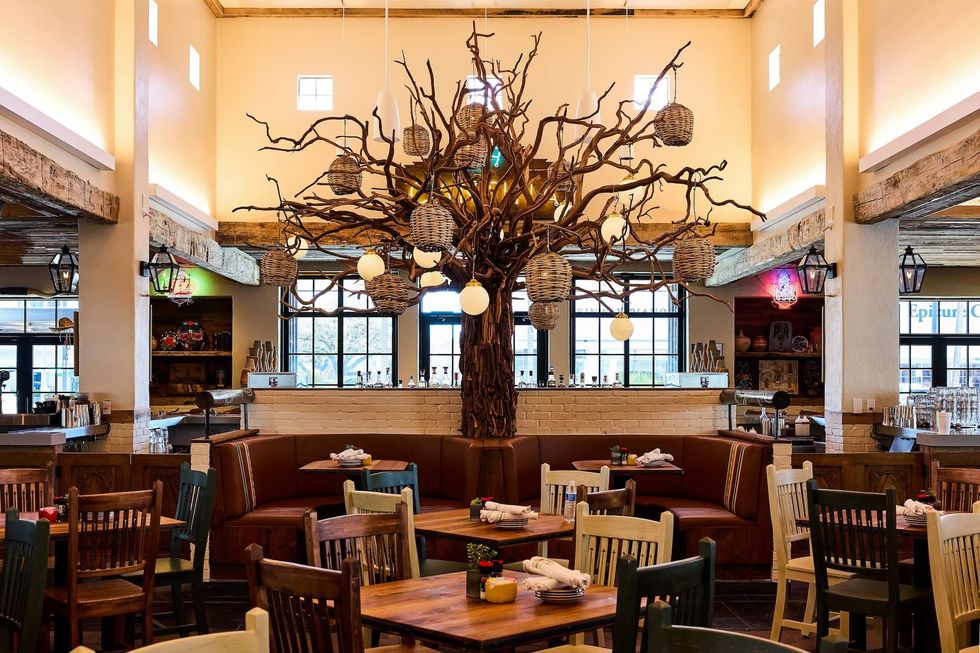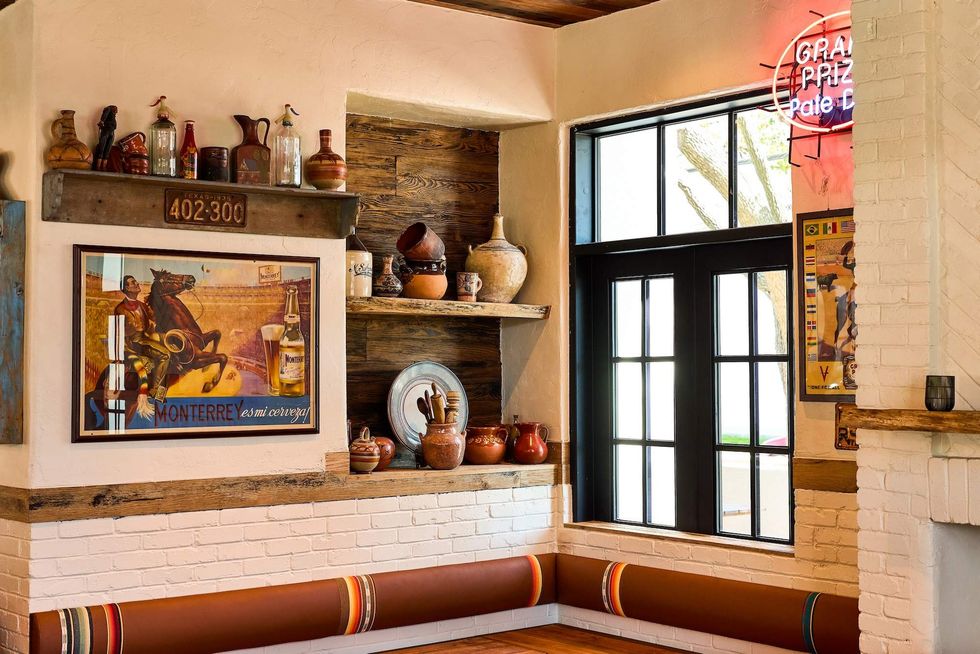Despite what seems like a spate of recent closures, Houston’s dining scene continues to grow with a range of new and returning establishments. From scenic patios to intimate sushi spots, read on to see where you can find fare such as “brunch-uterie” boards, truffle tagliatelle, and tamarind lobster.
City Cellars HTX
A familiar face has returned to the Houston community. City Cellars HTX is reopening after a nearly two-year hiatus and in a completely new location.
The restaurant launched in 2020 at its original Museum District address that could seat only 71 patrons in its 2,000 square feet. City Cellars HTX closed its doors in July 2023 and began migrating to the East River development in Fifth Ward. Located at 2850 Riverby Road, the venue’s spacious patio overlooks the bayou with downtown views.
The larger space allowed owner Daniel Wolfe and chef Antonette Williams-Wright to expand the globally-inspired fare alongside Instagrammable items such as “brunch-uterie” boards and mimosa flights. The 21-plus only spot maintains a strict dress code that will carry over into future events, such as weekly live music and trivia nights.
City Cellars HTX is open Monday through Wednesday from 11 am to 10 pm, Thursday from 10 am to 12 am, Friday and Saturday from 10 am to 2 am, and Sunday from 10 am to 9 pm.
Remi at Hotel Granduca
Hotel Granduca is celebrating its grand reopening with Remi, a fine dining establishment that weaves European inspiration with Texas hospitality.
Real estate firm Transwestern purchased the Hotel Granduca in 2024 to renovate and relaunch the 122-room property. Chicago-based Episcope Hospitality joined Transwestern to bring Remi to fruition, with Italian executive chef Maurizio Ferrarese, who also led the hotel's previous restaurant Alba Ristorante, and Ryan Gaudin leading the beverage program.
The current menu features crispy Roman artichokes with roasted garlic aioli, Ora King salmon with charred broccolini and romesco, and a half chicken from Greener Pastures Texas served alongside truffle tagliatelle. A wine list of 130 selections and a reserve list of Domaine de la Romanée-Conti vintages provides plenty of pairing opportunities.
Adjacent to the restaurant is Bar Remi, where patrons can enjoy crafted coffee drinks in the morning and cocktail creations in the evening, including a signature martini program.
Artist David Yarrow’s “The Last Supper in Texas” serves as the focal point of Remi, with a rotating collection of the artist’s photography on display (and available for purchase) in the restaurant’s courtyard. Interior designer Kara Childress designed the venue and its six unique event spaces, including The Library, a moody room ideal for cocktails and conversations with rare books and antiques.
Remi is open daily from 7 am to 9 pm.
Keep an eye out this spring for the return of afternoon tea at Hotel Granduca.
Goode Co. Kitchen and Cantina
The fourth outpost of Goode Co. Kitchen and Cantina has officially debuted for business at 2002 W. Gray Street. The former La Griglia space at the River Oaks Shopping Center retains some of its former features but with upgrades, such as the large interior tree that draws the eye upward and the historic concrete pavers, autographed by local celebrities when La Griglia launched.
Goode Co. Kitchen and Cantina in River Oaks dishes out favorites found at its other addresses, like mesquite-grilled fajitas and redfish on the half shell. The anticipated Bar Buena is slated for later this spring behind the main restaurant. The speakeasy-ish bar will be tequila-forward, drawing inspiration from the mezcal-making process.
“Bar Buena is going to be a bit more refined than what we’ve done at Kitchen and Cantina,” chef and president Levi Goode told CultureMap. “If it’s ranch-inspired, very Texas-Mexican frontera, you’re going to get more a polished finish at Bar Buena. It’s a small space, very intimate. A place where we’ll be well suited for great hospitality with small bites, great cocktails, and tastings of agave-based spirits.”
Good Co. Kitchen and Cantina is open Monday through Thursday from 11 am to 10 pm, Friday from 11 am to 10:30 pm, Saturday from 9 am to 10:30 pm, and Sunday from 9 am to 9 pm.
Annam
Autry Park is saying farewell to Auden in a few short weeks, but the urban village tucked between Montrose and River Oaks continues to expand with Annam.
The French-Vietnamese concept is helmed by partner and chef Chris Kinjo, the well-known sushi savant behind both MF Sushi and MF Lobster & Ceviche (also in Autry Park).
The menu serves as a history lesson of sorts, with plates such as Vietnamese crepes (Bánh Xèo), a popular street food that some believe is a remnant of the country’s time as a French colony. Chef Kinjo wanted most of the offerings to be tapas-style, encouraging diners to sample dishes that were small in size but big in flavor. Innovative entrees include the King Salmon clay pot, tamarind lobster, and a Cornish half hen.
The restaurant's design also reflects the influences of France and Vietnam. Handhewn white arches soar overhead, while crystal chandeliers sparkle and delicate Vietnamese lanterns glow. Bottles and crates of wine are scattered around the restaurant, a reminder of Annam's expansive wine list and the option to purchase for home.
Amman is open Friday and Saturday from 5:30 pm to 11 pm, and from 5:30 pm to 10 pm on Sundays and Tuesday through Thursday.
Doko
Autry Park also recently welcomed Doko, a sushi and yakitori restaurant from chefs Patrick Pham and Daniel Lee of Duckstache Hospitality, known for Kokoro, Handies Douzo, Himari, and Aiko.
Located at 3737 Cogdell St, Suite 145, the spot is hidden away in a quiet alley, creating an intimate atmosphere with seating for only 50 diners. The lunch menu’s three sushi sets of traditional make, handrolls, and nigiri begin at the more approachable price of $19, but the restaurant’s signature six-course chef tasting menu at $75 encapsulates Doko’s abilities with A5 wagyu toast to the chef’s choice crafted cut roll.
Finish the meal off at Bar Doko, the 16-seat, Japanese-inspired cocktail bar next door that boasts one of the largest selections of Japanese whiskey in the state.
Doko is open Sunday through Thursday from 11 am to 10 pm and Friday and Saturday from 11 am to 11 pm.










